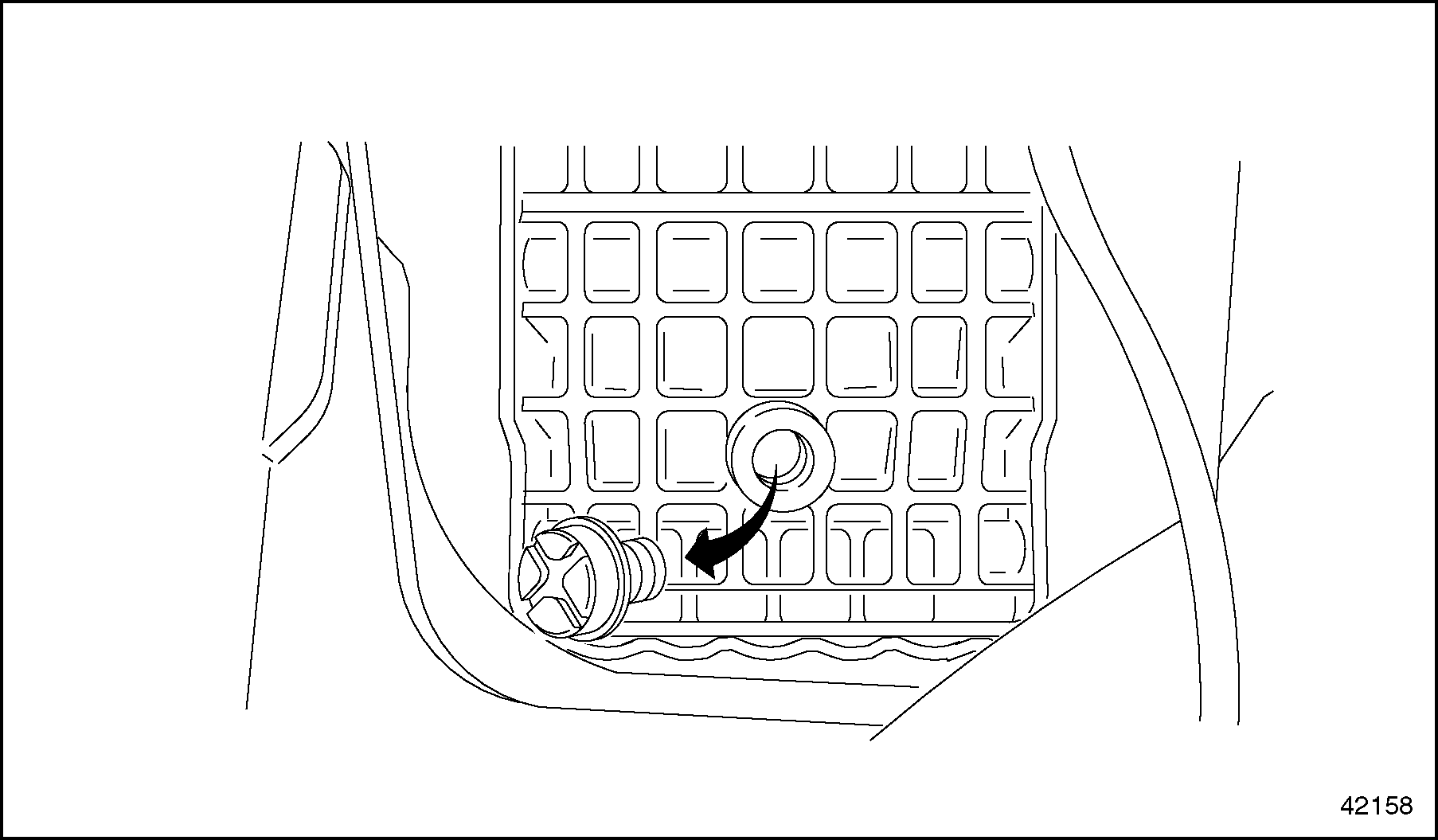Section 4.1
Cooling System
Section 4.1.1
Cooling System Draining and Flushing
Drain and flush the cooling system as follows:
|
HOT COOLANT |
|
To avoid scalding from the expulsion of hot coolant, never remove the cooling system pressure cap while the engine is at operating temperature. Wear adequate protective clothing (face shield, rubber gloves, apron, and boots). Remove the cap slowly to relieve pressure. |
- Open the cap on the surge tank slowly, to allow excess pressure to escape. Set the cap aside. See Figure
"Surge Tank"
.

1. Cap
3. Low-Coolant- Level Probe
2. Surge Tank
Figure 1. Surge Tank
- Open the water regulating valve for the heating system.
- Drain the coolant from the radiator. See Figure
"Coolant Drain Plug"
. Cooling system capacity is listed in Table
"Cooling System Capacity"
.

Figure 2. Coolant Drain Plug
Description
Capacity in liters (Quarts)
Engine Coolant Capacity (all vehicles
Engine capacity*
30.0 (31.7)
Century Class and Columbia Cooling System Capacity
Total capacity†
57.4 (60.7)
Antifreeze quantity at 50 percent
28.7 (30.4)
Antifreeze quantity at 55 percent
31.6 (33.4)
Sterling A-Line and L-Line Cooling System Capacity
Total capacity
53.8 (56.8)
Antifreeze quantity at 50 percent
26.9 (28.4)
Antifreeze quantity at 55 percent
29.6 (31.3)
FL112 Cooling System Capacity
Total capacity
42.0 (44.4)
Antifreeze quantity at 50 percent
21.0 (22.2)
Antifreeze quantity at 55 percent
23.1 (24.4)
Table 3. Cooling System Capacity
* Does not include capacity of cooling system.
†With 1200 sq. ft. radiator.- Place a receptacle underneath the coolant drain plug. Choose one that is large enough to hold the expected quantity of coolant.
Note: Make sure the coolant can flow unobstructed into the receptacle.
- Open the coolant drain plug located on the bottom of the radiator.

EYE INJURY
To avoid injury from flying debris when using compressed air, wear adequate eye protection (face shield or safety goggles) and do not exceed 276 kPa (40 psi) air pressure.
- Place a receptacle underneath the coolant drain plug. Choose one that is large enough to hold the expected quantity of coolant.
- Flush the radiator.
- Attach a flushing gun nozzle to the radiator outlet.
- Run water in until the radiator is full.
- Apply no more than 140 kPa (20 psi) air pressure intermittently to help dislodge sediment buildup in the core.
NOTICE:
When flushing the radiator, do not apply more than 20 psi (140 kPa) air pressure. Excessive pressure can damage the radiator or heater core.
- Drain the radiator, and flush the radiator until clean water flows from the radiator. Remove the flushing gun.
- When the coolant has drained, install the coolant drain plug on the bottom of the radiator.
- Add coolant in the specified concentration. Listed in Table
"Cooling System Capacity"
is the cooling system capacity. Listed in Table
"Coolant Mixing Ratio"
is the coolant mixing ratio.
Antifreeze Protection Down to °F (°C)
Water Percentage by Volume
Corrosion-Inhibiting Antifreeze Percentage by Volume
-34 (-37)
50
50
-49 (-45)
40
Maximum 60
Table 6. Coolant Mixing Ratio- Tighten the coolant drain plug 30 N·m (22 ft·lb).
- Add coolant up to the maximum fill level on the surge tank.
- Check the coolant level and check the cooling system for leaks.

PERSONAL INJURY
Diesel engine exhaust and some of its constituents are known to the State of California to cause cancer, birth defects, and other reproductive harm.
- Always start and operate an engine in a well ventilated area.
- If operating an engine in an enclosed area, vent the exhaust to the outside.
- Do not modify or tamper with the exhaust system or emission control system.
- Start the engine and run it for about one minute at varying speeds to release air pockets in the cooling system.
- Check all hoses at the radiator, coolant pump, and surge tank for leaks.
- Check the coolant level and add more coolant if necessary.
- Shut down the engine.
- Close and tighten the cap on the surge tank.
| MBE 4000 Service Manual - 6SE412 |
| Generated on 10-13-2008 |
Fuel mixing in water